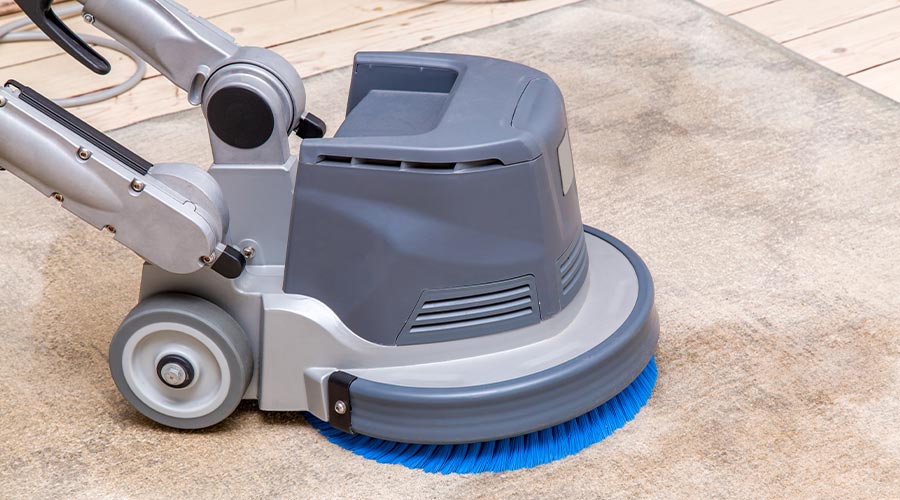
Carpeting and mats provide numerous benefits to facilities. These include dampening noise; reducing incidents of slips and falls; contributing to the style and design of spaces; and providing thermal insulation, which helps to reduce energy costs. Carpets and mats can also contribute to improved indoor air quality (IAQ) by acting as a passive air filter, trapping dust, pollen, and other particles in their fibers, removing those contaminants from circulating into the air.
With an ongoing industry focus on healthy IAQ, many carpet manufacturers now design their products to significantly reduce and even eliminate emissions of volatile organic compounds (VOCs) such as formaldehyde and benzene. According to the Carpet and Rug Institute (CRI), new carpet is one of the lowest VOC-emitting flooring choices available. In fact, the CRI's Green Label Plus program identifies carpet, adhesive, and cushion products that meet or exceed government IAQ regulations and represent the lowest emitting products on the market.
When carpet is kept clean and dry, mold cannot grow on its synthetic fibers. Also, when carpet is routinely and correctly cleaned, the dust, dirt, pollen, bacteria, and other contaminants that are trapped in it are removed — rather than lingering where they can be stirred up into the air by the same foot traffic that deposited them.
“Individuals with allergies, asthma, or COPD can be adversely affected by carpet neglect,” says Gary Clipperton, president, National Pro Clean, Colorado Springs, Colorado. “Foot traffic, carts, and even upright vacuum cleaners can stir up dust and harmful contaminants.”
Good cleaning strategies can help prevent carpeting from trapping pollutants and becoming a detriment to the environment inside a facility, as well as reduce the off-gassing of VOCs. Proper carpet cleaning and extraction techniques will help avert carpet neglect and contribute to improved IAQ.
Clean Carpet, Improved IAQ
What cleaning routines and methods do the experts indicate are the most effective for keeping carpets clean and safe? The first step, according to Clipperton, is taking preventative measures to minimize the amount of moisture, dirt, and pollutants that are brought into a facility.
“These include, parking lot maintenance, walk-off mats, spot removal — especially sticky residues — and HVAC maintenance,” he says. “If dirt, pollen, and other particles don't cross the threshold, they won't find their way into a facility's atmosphere by way of the carpeting.”
After that, following a regular schedule for vacuuming is essential. According to the CRI, consistent vacuuming is one of the easiest ways to remove dirt that may recirculate. It eliminates 90 to 95 percent of dry soil from a carpet's fibers. Using the correct vacuum equipment for the space, and maintaining it, is also important.
“Follow the equipment manufacturer's instructions, including emptying vacuum bags that are one-third or one-half full, and keep filters clean,” advises Clipperton.
The CRI recommends ensuring that all vacuums are equipped with a high-efficiency particulate air (HEPA) filter. HEPA filters are most effective in the removal of the common contaminants that trigger asthma and allergies. A HEPA filter will trap 99.97 percent of all airborne particles larger than 0.3 microns. To illustrate how small this is, a human red blood cell measures between 6 and 8 microns wide.
After ensuring that the proper vacuum and filters are being used, vacuuming frequency— as well as technique — will impact how many particles and contaminants remain in carpeting. Clipperton notes that the CRI recommends three levels of vacuuming frequency depending on the amount of traffic: light, medium, and heavy. Vacuuming should be done several times a week, especially in high-traffic areas. Ultra-rapid vacuuming and fast extraction processes pick up scraps and surface soil, but aren't effective in removing dirt and particles hiding deeper in the carpet.
Thinking Beyond the Vacuum

 The Down and Dirty on Cleaning in Virus Season
The Down and Dirty on Cleaning in Virus Season How Surfactant Use is Expanding in Commercial Cleaning
How Surfactant Use is Expanding in Commercial Cleaning